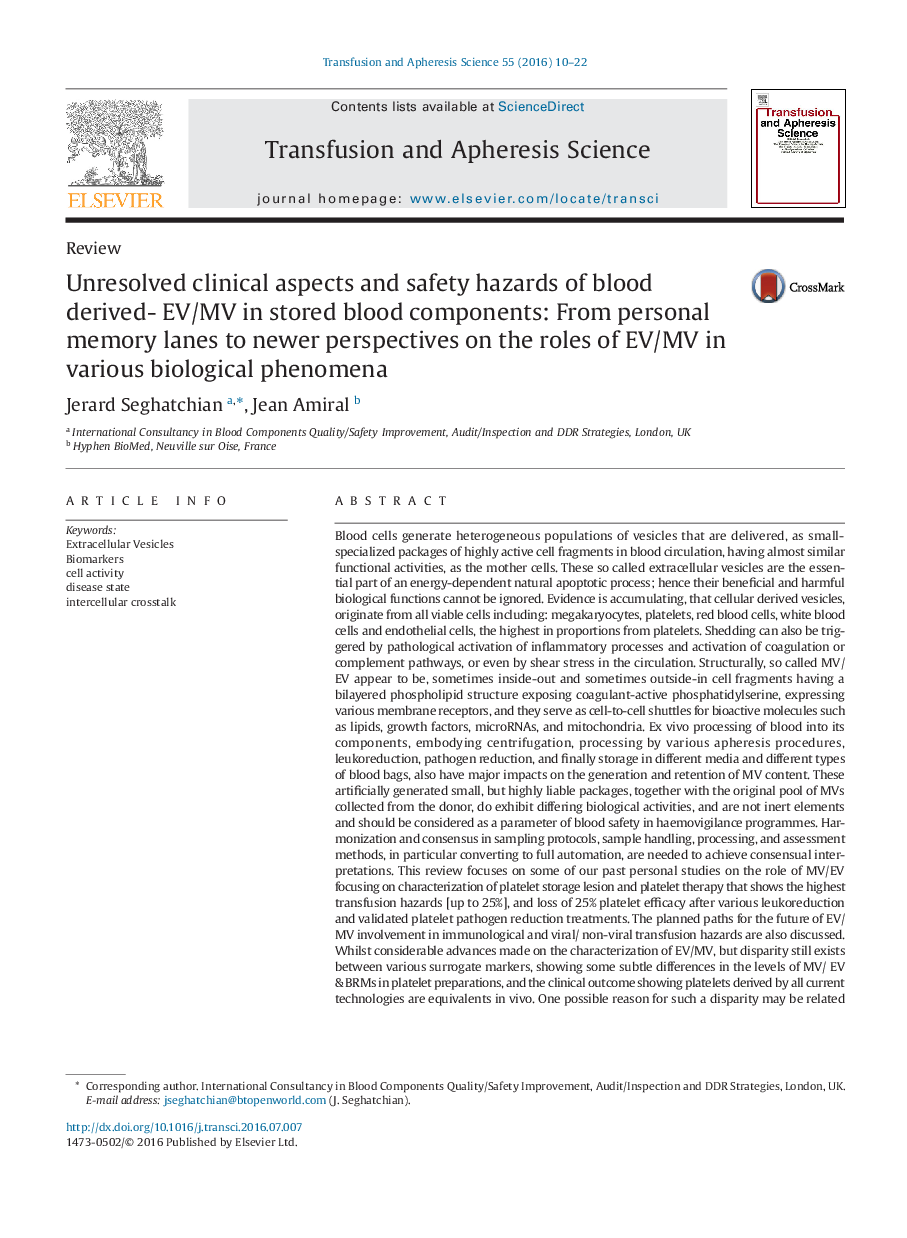| کد مقاله | کد نشریه | سال انتشار | مقاله انگلیسی | نسخه تمام متن |
|---|---|---|---|---|
| 5664597 | 1407715 | 2016 | 13 صفحه PDF | دانلود رایگان |

Blood cells generate heterogeneous populations of vesicles that are delivered, as small-specialized packages of highly active cell fragments in blood circulation, having almost similar functional activities, as the mother cells. These so called extracellular vesicles are the essential part of an energy-dependent natural apoptotic process; hence their beneficial and harmful biological functions cannot be ignored. Evidence is accumulating, that cellular derived vesicles, originate from all viable cells including: megakaryocytes, platelets, red blood cells, white blood cells and endothelial cells, the highest in proportions from platelets. Shedding can also be triggered by pathological activation of inflammatory processes and activation of coagulation or complement pathways, or even by shear stress in the circulation. Structurally, so called MV/EV appear to be, sometimes inside-out and sometimes outside-in cell fragments having a bilayered phospholipid structure exposing coagulant-active phosphatidylserine, expressing various membrane receptors, and they serve as cell-to-cell shuttles for bioactive molecules such as lipids, growth factors, microRNAs, and mitochondria. Ex vivo processing of blood into its components, embodying centrifugation, processing by various apheresis procedures, leukoreduction, pathogen reduction, and finally storage in different media and different types of blood bags, also have major impacts on the generation and retention of MV content. These artificially generated small, but highly liable packages, together with the original pool of MVs collected from the donor, do exhibit differing biological activities, and are not inert elements and should be considered as a parameter of blood safety in haemovigilance programmes. Harmonization and consensus in sampling protocols, sample handling, processing, and assessment methods, in particular converting to full automation, are needed to achieve consensual interpretations. This review focuses on some of our past personal studies on the role of MV/EV focusing on characterization of platelet storage lesion and platelet therapy that shows the highest transfusion hazards [up to 25%], and loss of 25% platelet efficacy after various leukoreduction and validated platelet pathogen reduction treatments. The planned paths for the future of EV/MV involvement in immunological and viral/ non-viral transfusion hazards are also discussed. Whilst considerable advances made on the characterization of EV/MV, but disparity still exists between various surrogate markers, showing some subtle differences in the levels of MV/ EV & BRMs in platelet preparations, and the clinical outcome showing platelets derived by all current technologies are equivalents in vivo. One possible reason for such a disparity may be relatedto the fact that MVs, being the end products of apoptotic cells, have little specificity and clear rapidly from circulation [<6âh in thrombocytopoenia]. This makes their clinical usefulness rather short lived. The recent findings that pegylating smaller subsets of EV increases its circulatory life from <15 minutes to approximately about one hour is highly promising, in particular, for drug delivery on specific sides. Hence a promising clinical utility of EV/MV continues, as a journey without end, indeed. This manuscript is based mainly on the selected key readings listed below.
Journal: Transfusion and Apheresis Science - Volume 55, Issue 1, August 2016, Pages 10-22